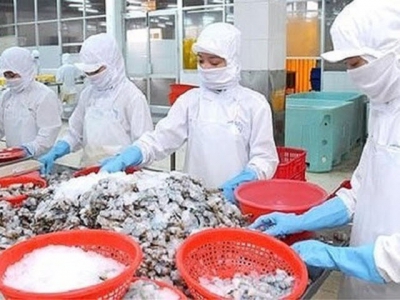Seafood exports forecast to reach US$9 billion in 2019

In last six months, the outlook for aquatic exports to EU may be more positive after the European Union – Vietnam Free Trade Agreement (EVFTA) was signed.
The Vietnam Association of Seafood Exporters and Producers (VASEP) has predicted that Vietnamese aquatic exports will grow around 5% in the second half this year, grossing US$5 billion, lifting the total turnover to some US$9 billion by the end of 2019, up 2% year on year, VnExpress reported.
The General Department of Vietnam Customs’ statistics showed that Vietnamese aquatic exports reached US$3.19 billion by the end of May, down 1% year-on-year. However, the figure for the first six months of this year is forecast to rise to US$3.95 billion.
Although the export revenues of prawns and tra fish (pangasius) in H1 diminished, those of other seafood including tuna, squid-octopus, and other saltwater fish still went up year-on-year.
Aquatic exports to China and Hong Kong (China) fell 5% as the government tightened control on product quality and border trade.
On the contrary, exports to Japan still increased by 11%, making this country the largest seafood importer from Vietnam. Besides, exports to the US also increased by 3.4%.
In last six months, the outlook for aquatic exports to EU may be more positive after the European Union – Vietnam Free Trade Agreement (EVFTA) was signed. The number seafood shipments to the US and Japanese market will also increase, especially prawn, according to VASEP
However, the association expressed concerns that illegal, unreported and unregulated fishing (IUU) yellow card issued by EU could hinder aquatic exports from Vietnam to the EU market.
Có thể bạn quan tâm
 High demand for fishery products attracts investment capital
High demand for fishery products attracts investment capital As demand for seafood increases, the fishery sector continues to attract more investment capital.
 Mekong Delta shrimp crops a sweet success
Mekong Delta shrimp crops a sweet success Farmers in the Mekong Delta provinces are busy with a fruitful crop of shrimp, which is an abundant material source for its export industry. Phuong Hao reports.
 In pictures Nine ecological models for aquaculture
In pictures Nine ecological models for aquaculture According to one presentation at the Global Aquaculture Forum, about 5% of water pollution in Chinese waterways comes from aquaculture farms.